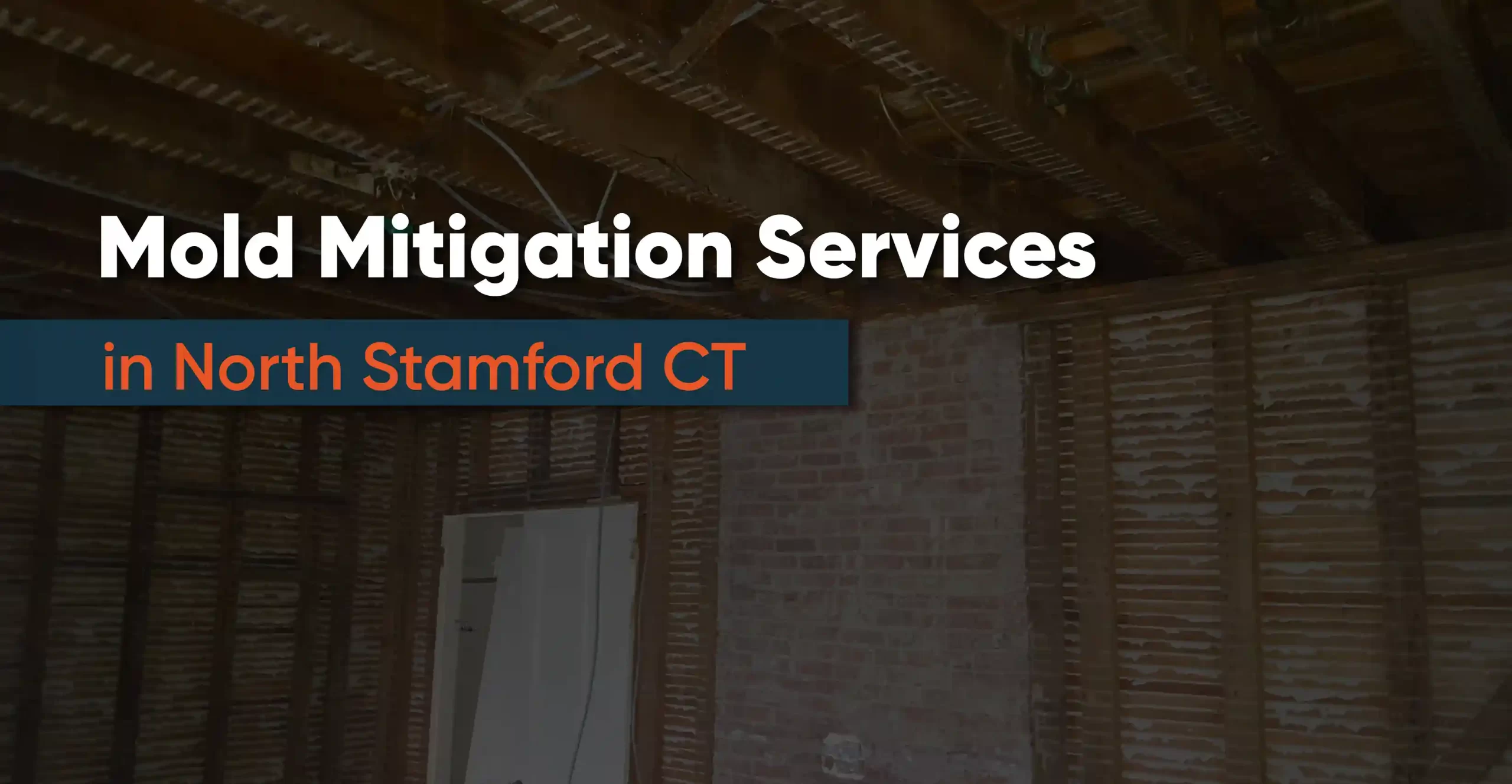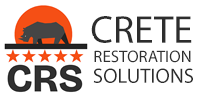
Mold Mitigation Services in North Stamford, CT | We-Fix-Concrete
Mold is a common problem in homes, especially in areas with changing weather like North Stamford, CT. When mold grows in your home, it can cause damage to your property and even lead to health issues. This is why mold mitigation services are so important. These services help remove mold and prevent it from spreading, ensuring your home remains a safe and healthy place to live.
In this guide, we’ll explore what mold mitigation is, why it’s important, and how professional services can help protect your home. We’ll also cover the different areas in your house where mold can grow, such as attics and basements, and what you can do to prevent mold problems in the future.
What Are Mold Mitigation Services?
Mold mitigation is the process of stopping mold from spreading in your home and safely removing it. This process involves several steps to ensure that the mold is eliminated and that the conditions that allowed mold to grow in the first place are fixed.
In places like North Stamford, where weather conditions can create damp environments, mold growth is common in basements, attics, and areas affected by leaks. Mold can grow fast if the right conditions are present—mainly moisture and organic material for mold to feed on.
Mold Mitigation Services Include:
- Inspection and Assessment: Professionals will inspect your home to find the source of the mold problem. This often includes checking for water leaks or areas where moisture builds up, which is the main cause of mold growth.
- Containment: Once the mold is found, the affected area is sealed off to prevent mold spores from spreading to other parts of your home.
- Removal and Cleaning: The mold is carefully removed using special tools and cleaning products designed to kill the mold and remove any damaged materials.
- Drying and Dehumidifying: Mold thrives in damp environments, so drying out the area is crucial to stop the mold from coming back. Industrial-grade dehumidifiers and fans are often used to remove moisture.
- Preventative Measures: After the mold has been removed, the mitigation team will take steps to prevent future mold growth by identifying and fixing any issues that led to the mold problem.
Why Mold and Water Go Hand-in-Hand
Mold problems in the home often stem from water damage. Whether from a leaky roof, burst pipes, or flooding, excess water creates a perfect environment for mold to grow. This is why water and mold mitigation services are often done together. If you fix the mold but don’t address the water problem, the mold will likely come back.

Some common sources of water problems in homes include:
- Leaky roofs
- Broken or burst pipes
- Poor drainage around the foundation
- Basement flooding
- High indoor humidity
In North Stamford, where weather can shift quickly from dry to wet, it’s common for homes to experience water-related issues that lead to mold. We-fix-concrete, a professional service in the area, not only addresses mold issues but also fixes water problems like basement leaks and poor drainage, helping to prevent mold before it even begins.
Where Mold Grows: Common Problem Areas
Mold can grow almost anywhere in your home if the conditions are right, but some areas are more prone to mold than others. These areas are typically damp, warm, and poorly ventilated, providing the perfect environment for mold to thrive. Let’s explore some of the most common places you might find mold in your home.
Attics: A Prime Spot for Mold Growth
Your attic might not be a place you visit often, but it’s one of the most common areas for mold to develop. Poor ventilation, roof leaks, and condensation can all contribute to mold growth in the attic. Attic mold mitigation is one of the most requested services in North Stamford homes.
Signs of attic mold include:
- A musty smell when you enter the attic
- Dark spots or stains on the ceiling or walls
- Visible mold on wooden beams or insulation
If mold is growing in your attic, it can spread to other parts of your home, like the ceilings and walls, causing significant damage. Hiring professionals for attic mold mitigation ensures that the mold is removed safely and that your attic is properly ventilated to prevent future mold problems.
Basements: Another Mold Hotspot
Basements are another area where mold often grows, especially if your home has experienced flooding or water leaks. North Stamford homes with older foundations are particularly vulnerable to water seepage, which leads to mold growth.
Basement mold can cause:
Damage to walls, floors, and personal belongings
Musty odors that can spread to the rest of the home
Respiratory issues for anyone living in the house
To prevent mold in your basement, it’s important to keep the area dry and well-ventilated. Water mitigation services, like those provided by we-fix-concrete, can help address water issues in your basement, ensuring that mold doesn’t have the chance to grow.
Bathrooms and Kitchens: High-Humidity Areas
Bathrooms and kitchens are high-moisture areas that are often overlooked when it comes to mold prevention. Steam from showers, cooking, and dishwashing can cause moisture to build up, especially in areas with poor ventilation.
To prevent mold in these areas:
- Use exhaust fans to remove excess moisture
- Wipe down wet surfaces, like countertops and shower walls
- Fix any plumbing leaks promptly
Regular cleaning and maintenance in your kitchen and bathrooms can help prevent mold from taking hold, but if you notice mold, it’s best to call a professional mold mitigation service to handle the problem.
The Mold Mitigation Process
When you hire a professional mold mitigation service in North Stamford, like we-fix-concrete, they follow a thorough process to ensure that the mold is completely removed and doesn’t return. Here’s a look at what you can expect during the mold mitigation process:
Initial Inspection: The first step is a detailed inspection to locate the mold and determine its source. Professionals will use tools like moisture meters and infrared cameras to find hidden mold or moisture problems that are fueling mold growth.
Containment: Once the mold is found, the area is sealed off using plastic sheeting and special air filtration devices to prevent mold spores from spreading to other parts of the house during the cleaning process.
Mold Removal: Mold is removed using specialized cleaning products and equipment designed to kill mold without spreading it. In some cases, materials like drywall or flooring may need to be removed if they are too damaged.
Drying and Dehumidifying: The affected area is dried out using industrial-grade fans and dehumidifiers. This step is crucial because even a little moisture can cause mold to grow back.
Post-Cleaning Inspection: After the mold is removed, a follow-up inspection is done to ensure that all the mold has been eradicated. The team will also check to make sure that the conditions that led to mold growth have been addressed.
Preventing Future Mold Growth
Once you’ve dealt with a mold problem, it’s important to take steps to prevent mold from coming back. Mold thrives in moist environments, so keeping your home dry is the best way to prevent mold. Here are some tips for keeping mold out of your home:
- Fix leaks promptly: Whether it’s a leaking roof, a burst pipe, or a dripping faucet, fixing leaks quickly can stop mold before it starts.
- Use a dehumidifier: Keeping indoor humidity levels below 50% can help prevent mold growth, especially in basements and other damp areas.
- Improve ventilation: Proper ventilation in your home, particularly in high-moisture areas like attics, bathrooms, and kitchens, can prevent mold from growing.
- Keep an eye on problem areas: Regularly check areas that are prone to moisture, such as basements, attics, and around windows, for signs of mold.
Professional mold mitigation services, like those offered by we-fix-concrete, can also help with preventative measures, such as waterproofing your basement or improving attic ventilation, to reduce the risk of mold growth.
Conclusion
Mold is a serious problem that can cause damage to your home and affect your health if not dealt with properly. For homeowners in North Stamford, CT, investing in professional mold mitigation services is essential to protect your property. Whether it’s attic mold mitigation, basement waterproofing, or simply addressing a small water leak, taking action to prevent mold will keep your home safe and healthy for years to come.
If you suspect mold in your home or want to take steps to prevent it, companies like we-fix-concrete offer comprehensive water and mold mitigation services that will give you peace of mind.
Frequently Asked Questions (FAQ)
1. What is mold mitigation, and why is it important?
Mold mitigation involves identifying, containing, and removing mold from your home. It is important because mold can damage your property and cause health problems like allergies, respiratory issues, and asthma. Proper mold mitigation ensures that the mold is removed and the conditions that caused it, such as moisture or leaks, are fixed to prevent future growth.
2. How do I know if I need mold mitigation services?
Common signs of mold include musty odors, visible mold growth, and damp or water-damaged areas in your home, particularly in basements or attics. If you notice these signs or have had recent water damage, you may need mold mitigation services to prevent the spread of mold and protect your home.
3. Can mold come back after mitigation services?
If the root cause of the moisture problem isn’t fixed, mold can return. Professional mold mitigation services, like those offered by We-Fix-Concrete, focus not only on removing the mold but also on addressing underlying moisture issues to prevent future growth. Proper drying and ventilation are key to preventing mold from coming back.
4. What is the difference between mold mitigation and mold removal?
Mold removal refers to the process of physically eliminating mold from a specific area. Mold mitigation goes further by identifying the source of moisture that caused the mold, fixing it, and ensuring the environment is less likely to promote future mold growth. Mitigation aims to provide a long-term solution.
5. How long does mold mitigation take?
The length of time depends on the extent of the mold problem and the size of the affected area. Most mold mitigation projects take anywhere from a few hours to several days. Professional services will assess the situation and provide a timeline based on the scope of the damage and necessary repairs.
